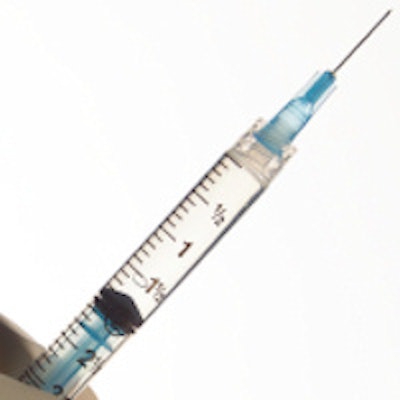
Can you guess which states in the U.S. still do not allow dental hygienists to administer local anesthesia?
Chances are, your hunch was right: States in the traditionally conservative south -- Alabama, Georgia, Mississippi, North Carolina, and Texas -- plus Delaware are the only ones in the U.S. where legislation has not yet been passed allowing dental hygienists to provide local anesthesia.
Fortunately, the landscape is slowly shifting, as indicated by Florida officials enacting a statute in March 2012 permitting dental hygienists to administer blocks and infiltration after they are accredited as a dental hygienist or take a board-approved course. Florida joined 44 other states in which dental hygienists can administer local anesthesia, with Washington leading the way in 1971.
"I honestly thought it would never be allowed in Florida," said Tricia Osuna, RDH, BSDH, FAADH, who has spent most of the last 16 years giving talks for dentists and allied health professionals on topics ranging from local anesthesia to oral cancer. "But I just came back from Georgia, and I get the sense that it will still be a while until dental hygienists there are granted the right to administer local anesthesia. Texas and Alabama are the other two places that likely will be the 'last hurrah.' "
Multiple benefits
In a recent talk at the Pacific Dental Conference in Vancouver, British Columbia, Osuna noted the following benefits of allowing dental hygienists to take over administering local anesthesia:
- No disruption of the dentists' treatment of other patients
- More efficient use of time and resources for all other team members
- Ability to provide anesthesia as needed throughout each appointment
“The barriers to the final states ... are breaking down.”
California Dental Hygienists'
Association
"The dentist pays the dental hygienist a salary; usually there's not an up-charge if they administer local anesthesia. And there's actually a time savings because if the dentist leaves the patient they're working on to come to the hygiene patient to administer the local anesthesia they run behind," she said in an interview with DrBicuspid.com. "And if the anesthesia didn't take, they have to leave their patient a second time to do it again. But if the hygienist is administering it, she or he can reanesthetize that part of the mouth and go back to the part she had been working on, without any time lost."
Osuna hails from California, the only state in which dental hygienists are self-regulating. In most other states dental hygienists are governed by the dental associations. California also became the sixth state, in 1976, in which dental hygienists can administer local anesthesia. Osuna graduated in 1978 and has never practiced without it.
Most dental hygienists enjoy the time-saving benefits and autonomy of being able to give local anesthesia, she noted. But she does understand why some hygienists are hesitant to learn the procedure, even when they work in places where they are allowed to do so. Most of these individuals graduated before it was allowed in their states. For example, only in 2008 were dental hygienists in New Jersey allowed to administer local anesthesia. In Pennsylvania, it was 2009, and 2010 in Indiana.
"People who graduated earlier didn't learn how to administer local anesthesia during their course work, so they may be reluctant to take the course now," Osuna noted. "But on the flip side, there are a lot of people who graduated in the last two or three decades in the late-adopter states who could hardly wait to do it."
Long-standing safety record
Others share the hope that more dental hygienists -- and more states -- will cross the floor and join the majority. These include officials at the American Dental Hygienists' Association and the California Dental Hygienists' Association (CDHA).
"The records for safe administration of both infiltration and block anesthesia go back almost 40 years in California," said CDHA President Susan Lopez, RDH, in an e-mail to DrBicuspid.com. "The barriers to the final states where dental hygienists must rely on a dentist to provide pain control are breaking down. There is no rational reason for this reliance, when there are data from numerous states and more than 40 years of treatment that support the safety and the benefits for both patients and the practice."
However, barriers still remain to efficient use of staff time and resources even in the states that do allow dental hygienists to administer local anesthesia: In California and in 36 other states, the dentist must be present, Lopez noted. Furthermore, in two states -- New York and South Carolina -- only infiltration is allowed, and in South Carolina, dental hygienists can administer both blocks and infiltration but only to patients older than age 18.
"We are hoping to use the long-standing safety record to expand our scope in the near future to include the ability to provide this service to our patients under general supervision -- meaning the dentist does not have to be at the patient's side -- instead of direct supervision. Other states, such as Minnesota, with their 'collaborative agreements' do allow hygienists to provide this service to their patients under general supervision," Lopez noted.



















